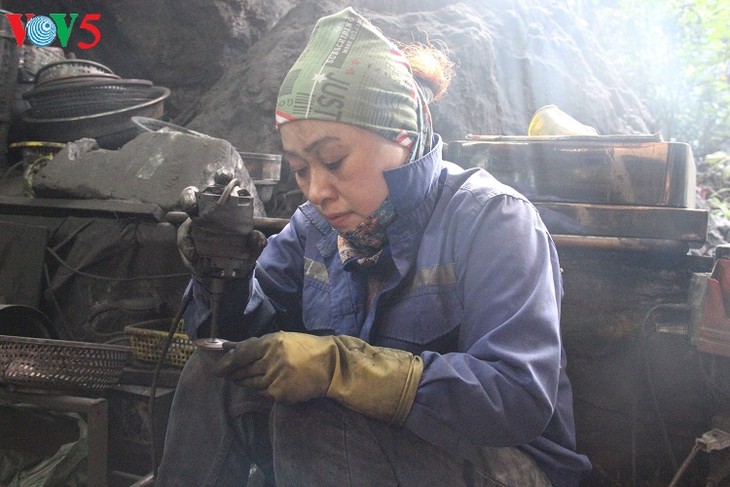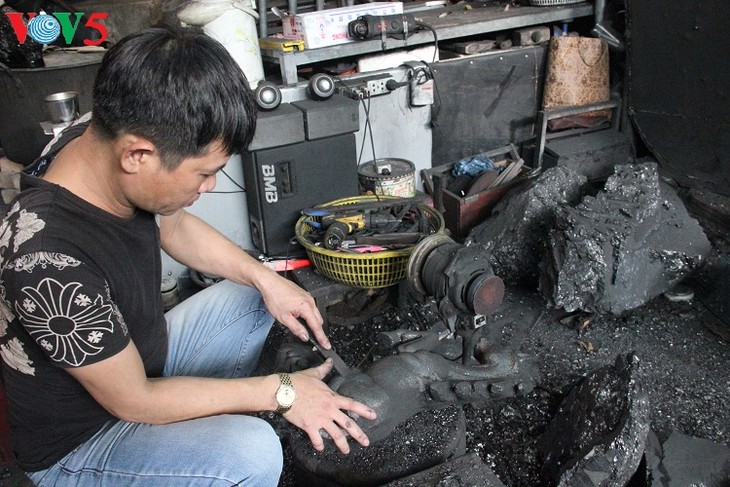(VOVWORLD) - Rough black coals are turned into beautiful sculptural pieces by skillful carvers. Coal sculpture done by hands prevails only in Quang Ninh province, which has been dubbed Vietnam’s coal mine.
 A coal sculptor at work (Photo: Mai Linh) A coal sculptor at work (Photo: Mai Linh) |
The sound of sawing, chiseling, and carving comes from the workshop of Nguyen Van Quyet and Nguyen Thi Thanh Binh in Ha Long city. Set at the foot of a limestone hill, the 20-year-old facility is covered with coal dust and littered with tools. Born into a family in which 3 generations have been involved in coal sculpture, Quyet began to carve coal at the age of 8. His workshop has created thousands of sculptures of deer, lions, and Ha Long Bay.
Coals for sculpture must be taken from the Coc Sau and Deo Nai mines because they are strong and shiny. It takes months to get them. Binh, who is Quyet’s wife, says coal sculpture requires accuracy and meticulousness:“First is the selection of the coal, which should be shiny and smooth. Then comes sawing, chiseling, carving, and polishing. All steps are done manually. If a block of coal is broken, we need to find another coal and start again.”
 Nguyen Van Quyet carves a sculpture of horse (Photo: Mai Linh) Nguyen Van Quyet carves a sculpture of horse (Photo: Mai Linh) |
Quang Ninh’s coal sculpture dates back to the 19th century under French colonial rule. In the beginning, skilled coalminers carved coal for fun and spread the craft from one mine to another. In the 1990s, coal sculpture flourished, forming workshop clusters in Hong Hai ward and a series of shops on Le Thanh Tong Street, Ha Long city. After the Quang Ninh Handicraft and Fine Art Company and Hong Gai Cooperative dissolved, skilled craftsmen set up their own workshops. Only a few of them still practice the craft. 80-year-old Nguyen Tuan Loi, Quyet’s father, is a veteran coal sculptor. He used to work for the Quang Ninh Handicraft and Fine Art Company. Loi said:“The market has shrunk and the number of sculptors has declined. We must be passionate about our job and study fine art to revive coal sculpture.”
 80-year-old Nguyen Tuan Loi is a veteran coal sculptor (Photo: Mai Linh) 80-year-old Nguyen Tuan Loi is a veteran coal sculptor (Photo: Mai Linh) |
During its heyday, Quyet’s family workshop employed 10 workers. Only 2 remain. Quyet, whose face is smeared with coal dust, says fewer than 10 households in Quang Ninh are now involved in coal carving. Quyet said:“Coal sculpture exists only in Quang Ninh province, a region of coal mines. I hope that local authorities will provide us with capital and training to preserve our signature coal sculpture craft.”